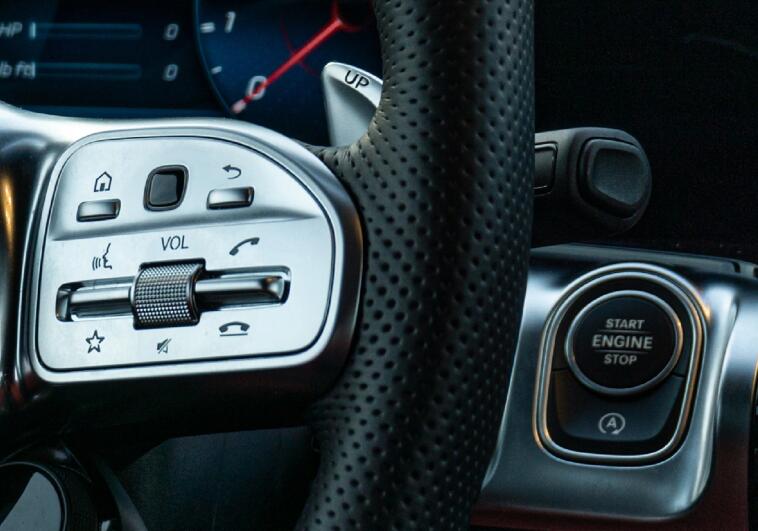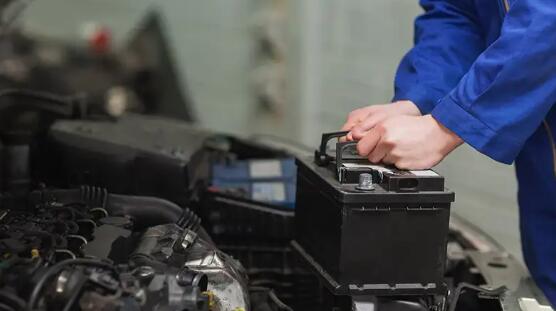There are several tips and tricks available to help you improve your fuel economy. And one of them is increasingly being built right into your car. Many new vehicles have a start-stop system, nominally to reduce how much gas is wasted during idling. But does this feature truly save you fuel? And even if it does, are there any long-term issues that can develop because of it?
First introduced in the 1970s, start-stop systems, or ‘auto start-stop’ as they’re sometimes called, have become more prevalent in the last few years. And that’s thanks to improvements in automotive electronics, especially in starter motors and hybrid powertrains.
Although each start-stop system is slightly different, they work in roughly the same way. When your car detects you’ve come to a stop and have the brake pedal pressed, it sends a signal to the ECU. The ECU then cuts your car’s fueling and ignition systems temporarily, shutting the engine down. And when you take your foot off the brake pedal and/or press the accelerator, the ECU tells the engine to restart. It’s even possible to give cars with manual transmissions start-stop systems.
While the latest start-stop systems are fairly smooth, some owners have found them too rough or annoying to use daily. However, automakers have taken several steps to rectify this.
For one, cars with start-stop systems usually have a dedicated button to turn the feature off, Car and Driver notes. And because hybrids’ starter motors often double as generators, they can ‘smooth over’ any lingering coarseness.

But as sophisticated as stop-start systems are, they’re not infallible. And, more to the point, using them means your car’s engine turns off and on multiple times per trip. That’s led to some consumer concern that the technology might be accelerating engine wear and potentially causing long-term damage.
To be fair, shutting off your engine does leave various metal surfaces touching without the lubricating protection of oil. Plus, starter motors do eventually wear out, as do the batteries powering them. So, on a surface level, there is some logic behind the aversion to stop-start tech.
However, for the most part, these potential flaws have been addressed. Firstly, modern oils have significantly better lubricating and wear-protection properties than their predecessors. Furthermore, many stop-start systems don’t turn on until the engine has warmed up. This makes sure the oil and other fluids have properly circulated and coated the various engine components.
Secondly, cars with start-stop systems, hybrid or not, have oversized and overbuilt starters specifically to address wear-and-tear concerns. They can also detect if the battery has too low of a charge to sufficiently restart the engine. If that happens, the engine stays running to recharge the battery.
The stop-start system also knows if your A/C is running. If it is, the engine stays running to keep it on. And it’s the same story if your heater is running.
But, while start-stop systems aren’t necessarily damaging your engine, are they truly improving fuel economy? In a word, yes. But as with any fuel-saving tech, how much you save depends on how and where you drive.
In short, stop-start systems can help you save fuel, and they won’t damage your engine. So, unless you can’t stand the restarts, it’s worth keeping it on.

Stop-start systems on new vehicles are becoming a common feature these days and it’s a fairly easy system to understand.
When your car comes to a stop, instead of running idle the system cuts the engine.
Take your foot off the brake, the engine comes back to life and off you go. Simple.
It takes a bit of getting used to – for the uninitiated it can feel very odd for the engine to be completely dead when all you’ve done is stop at the traffic lights – but there’s no doubt it is a clever system.
It’s designed to have two major benefits – save fuel and reduce pollution. Makes sense.
If your engine isn’t running, then it’s not consuming fuel or producing pollution.
There are plenty of people who will argue that these reductions and savings are so small as to be insignificant, but every little bit helps, right?
Now, while it is designed to be friendlier on your wallet and the environment, the start-stop system is not on as good terms with the battery.
In fact, it is asking the battery to work quite a bit harder.
A standard car battery – a lead-acid flooded battery known as an LSI (lighting, starting, ignition) battery – is designed to give the engine a decent starting jolt a handful of times a day.
A stop-start system demands the same task be performed dozens of times a day. That’s hard work.
And it’s not just that constant stop-start power that’s needed either.
Just as in any other vehicle, when the engine is not running, everything else you want to use – from the infotainment systems to lights, from the air conditioning to a phone charger – gets its juice from the battery.
That sort of heavy lifting requires a battery with some extra oomph. And that’s where the start-stop batteries come in.
Also known as an Advanced Flooded Battery (AFB) or Enhanced Flooded Battery (EFB) is designed to meet entry-level stop-start technology requirements.
This battery is an improved version of the standard lead-acid flooded technology found in LSI batteries.
It is more durable, allows for a more consistent flow of power, has deep cycle capabilities (meaning it can dip deeper into its capacity without losing performance), faster recharge capabilities and an improved cycle life (the number of times it can be charged and discharged before it expires).
The most advanced example of lead-acid technology, with the acid absorbed into a fibreglass material rather than remaining as a free-flowing liquid.
The AGM battery is maintenance-free, fast charging, has a high power output, improved cycle life, excellent deep cycle properties and can continue to deliver high cranking power (the kind of power needed to kickstart the engine) even with a low state of charge.
AGM batteries can also be used with regenerative braking systems – a system in electric and hybrid vehicles which allows the energy created through braking with electric motors to be diverted to recharge the battery.
While both of these battery types can be used with stop-start technology, they are not interchangeable. ECM batteries can be replaced with an AGM battery, but vehicles designed to take AGM batteries should only ever use AGM technology. Standard LSI batteries should not even be considered.
As always, check with your vehicle’s manufacturer for guidance, or use the services of a qualified mechanic or auto electrician to make sure you’re installing the correct tech.
If you’re looking to replace or inspect the battery in your car, Houny can help!
We connect you with high-quality local battery specialists for hassle-free battery check-ups and replacement.
Copyright © Shenzhen Houny Battery Co., Ltd. All Rights Reserved | Sitemap | Technical Support:
